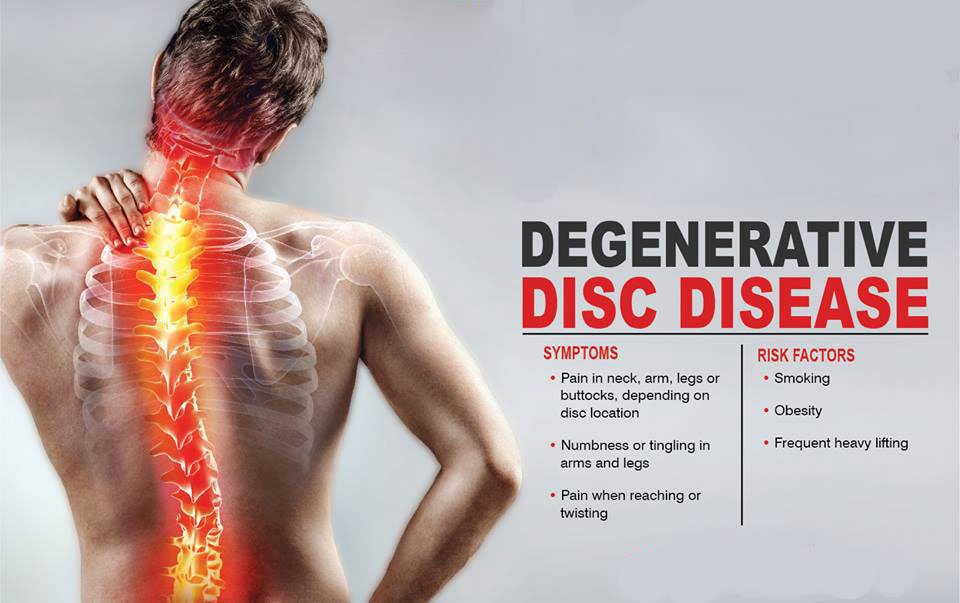what is degenerative disc disease?
Degenerative disc disease (DDD) is a condition that affects the intervertebral discs of the spine. The intervertebral discs are cushion-like structures that sit between the vertebrae and act as shock absorbers for the spine. In DDD, these discs lose their flexibility and elasticity, leading to several symptoms and complications.
Common Symptoms of Degenerative Disc Disease
Lower Back Pain
One of the most common symptoms of Degenerative Disc Disease is chronic low back pain. As the discs degenerate, they can become compressed, leading to pain, stiffness, and muscle spasms. In some cases, the pain may radiate into the legs, causing sciatica, which can significantly impact a person’s quality of life and make it difficult to perform daily activities such as working, exercising, and even sleeping.
Spinal Stiffness
As the discs lose their ability to absorb shock, the spine becomes less flexible, making it difficult to move and bend. This loss in shock absorption can make it challenging to perform tasks such as reaching a high shelf, bending over to tie shoes, or even standing for an extended period.
Bone Complications
Degenerative Disc Disease can also lead to other complications. For example, as the discs degenerate, the spine’s bones can begin to rub against each other, leading to bone spurs and other forms of arthritis. This rubbing can further restrict movement and increase pain. In severe cases, the disc material may herniate or leak out of the disc, potentially pressing on spinal nerves and causing radiculopathy.

Degenerative Disc Disease Management and Treatment
In some causes of degenerative disc disease can be managed with conservative treatments such as physical therapy, medications, and exercise. However, in more severe cases, surgery may be necessary.
Degenerative Disc Disease can significantly impact a person’s quality of life, making it difficult to perform everyday tasks and even leading to disability in some cases. It is a degenerative condition, so often, it is best to have an early diagnosis so that treatment and lifestyle changes can begin to help manage the symptoms.
Physical Therapy
One of the most common forms of treatment for Degenerative Disc Disease is physical therapy. Physical therapy can help to improve flexibility, strength, and function of the spine, reducing pain and improving overall mobility. These types of physical therapy may include exercises to improve posture and core strength, as well as exercises to improve flexibility and range of motion. Physical therapy may also include heat, ice, and ultrasound to help reduce pain and muscle spasms.
Medication
Over-the-counter pain relievers such as ibuprofen and acetaminophen can reduce pain and inflammation. In more severe cases, a doctor may prescribe stronger pain medications such as opioids, typically only used when the other treatments are ineffective.
Steroid Injections
Epidural steroid injection is also another option to help manage pain. This is a procedure where a steroid medication is injected directly into the epidural space, which surrounds the spinal cord and nerves. The steroid helps to reduce inflammation and provide pain relief, although this treatment is temporary and may need to be repeated.
Surgery
For more severe cases of Degenerative Disc Disease, surgery may be necessary. Surgery options include:
- Discectomy (removing the affected disc).
- Laminectomy (removing parts of the vertebrae).
- Spinal fusion (joining the vertebrae together to limit movement and prevent nerve impingement).
These surgical options are only considered when the conservative treatment does not provide adequate pain relief and the symptoms affect the patient’s daily activities, quality of life, and work.
Regenerative Therapies
The study of regenerative medicine has been gaining attention as a promising area of research. This field focuses on utilizing the body’s own cells and tissues to fix and rejuvenate damaged areas. In particular, scientists are exploring ways to grow new intervertebral discs or promote the healing of existing discs for individuals suffering from Degenerative Disc Disease. One organization actively working on this type of solution is DiscGenics, led by CEO Flagg Flanagan and COO Bob Wynalek.
Conclusion
It is important to note that DDD is a progressive condition, so early diagnosis and treatment are crucial in managing symptoms and improving the overall quality of life. A combination of physical therapy, medications, and in some cases, surgery may be necessary to help manage the symptoms of Degenerative Disc Disease. Speaking to a healthcare professional for personalized recommendations for the best treatment options is always advisable.







